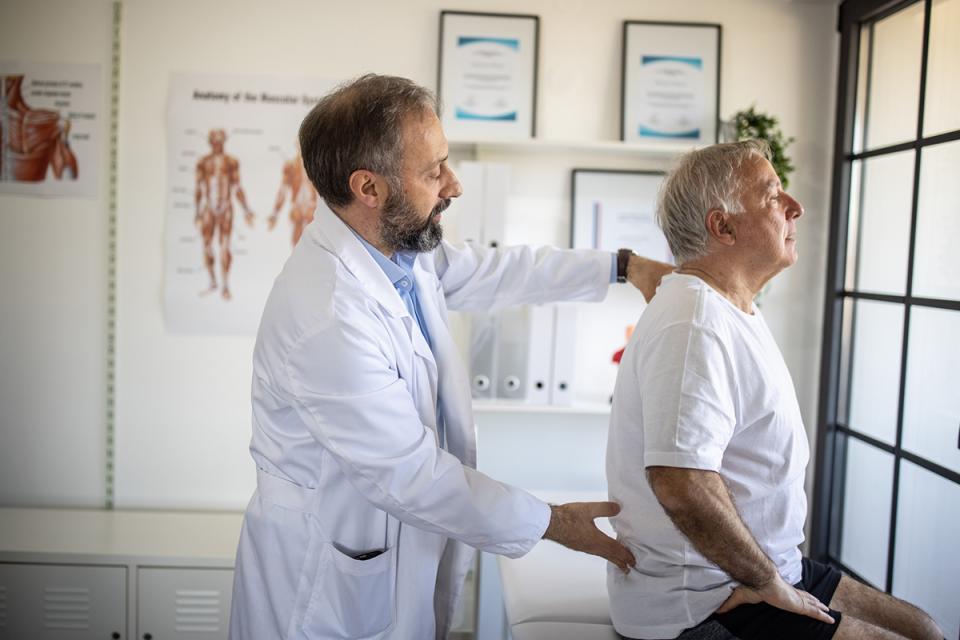Diagnosis and treatment of back and neck pain
Technologies used to diagnose your back and neck issues may include:
- X-rays
- Magnetic resonance imaging (MRI)
- Computed tomography (CT) scans
- Electromyography (EMG)
- Ultrasound
Once a diagnosis has been made, your doctor will work with you to help you understand your condition and various treatment options. Together, you’ll develop a care plan made for you and your unique needs.
Nonsurgical treatment options
Your spine specialist will look at non-surgical options to treat your back or neck disorder. Depending on your diagnosis, your doctor may use the following treatment methods:
- Rest
- Activity or lifestyle modifications
- Medications, including anti-inflammatory medications
- Pain management
- Physical therapy
- Dry needle therapy
- Epidural steroid injections or radiofrequency ablation
- Chiropractic care
Surgical treatment options
Some spine injuries and conditions require surgery. The end goal of surgery is to deliver neck or back relief while maintaining or improving your range of motion, stability and strength. The majority of today’s spine surgeries can be performed in an outpatient setting, which means you can go home the same day.
HonorHealth’s expert spine care team is committed to offering you the highest quality care to treat your condition while providing the least invasive approach to surgery whenever possible. Minimally invasive spine surgery allows surgeons to use smaller incisions and minimize injury to muscles, ligaments and joints in the surgical area. Minimally invasive approaches can shorten hospitals stays, minimize pain and speed recovery for:
- Spinal decompression surgeries
- Treating degenerative discs
- Correcting deformities like scoliosis and spinal instability (spondylolisthesis)
Depending on your diagnosis, your HonorHealth spine surgeon offers a wide-range of spine surgeries to treat your condition.
Care team
Your HonorHealth spine surgeon collaborates with other experts to diagnose and treat acute and chronic spine injuries, diseases, disorders and deformities of the spine. In addition to your surgeon, your multidisciplinary team may include a:
- Primary care physician
- Pain management provider
- Physical medicine and rehabilitation specialist
- Physical therapist
